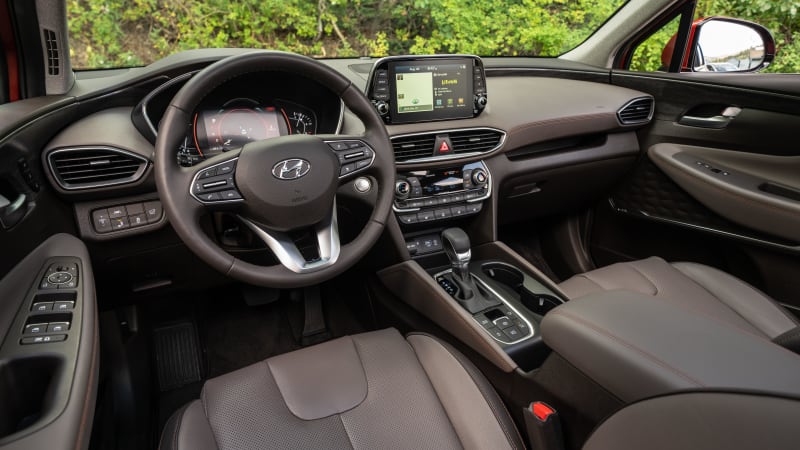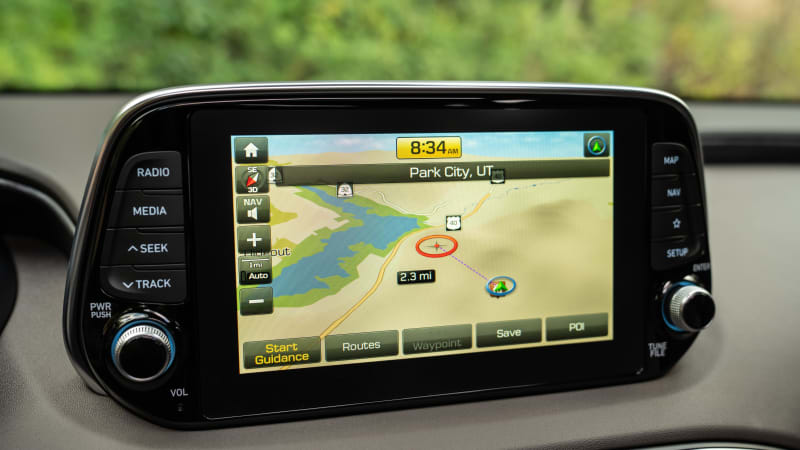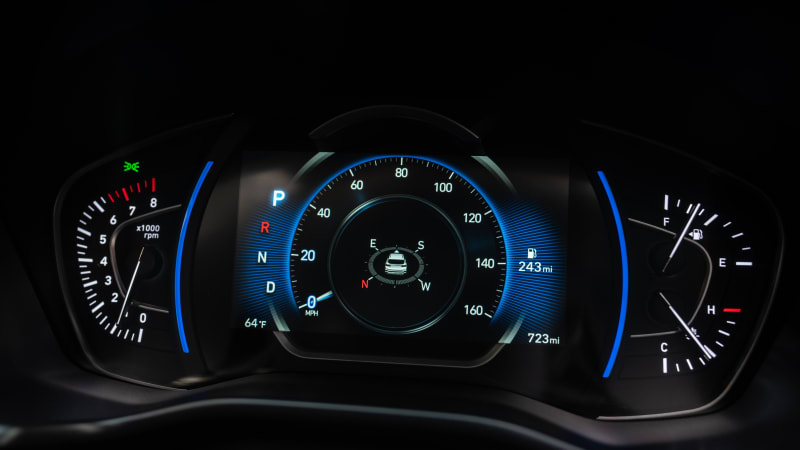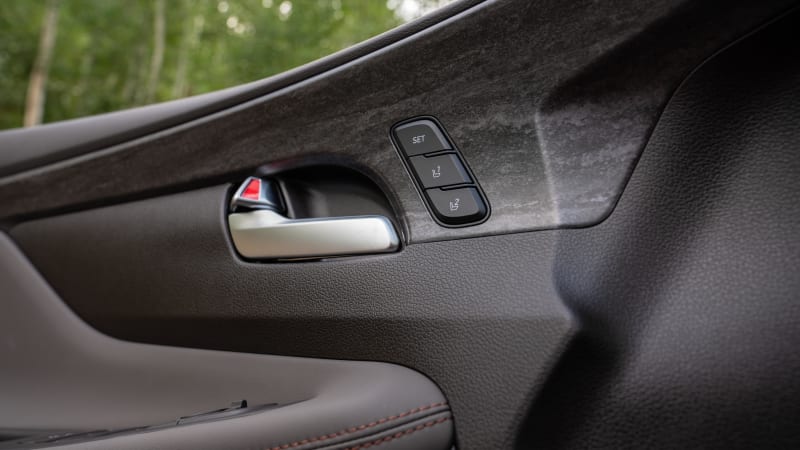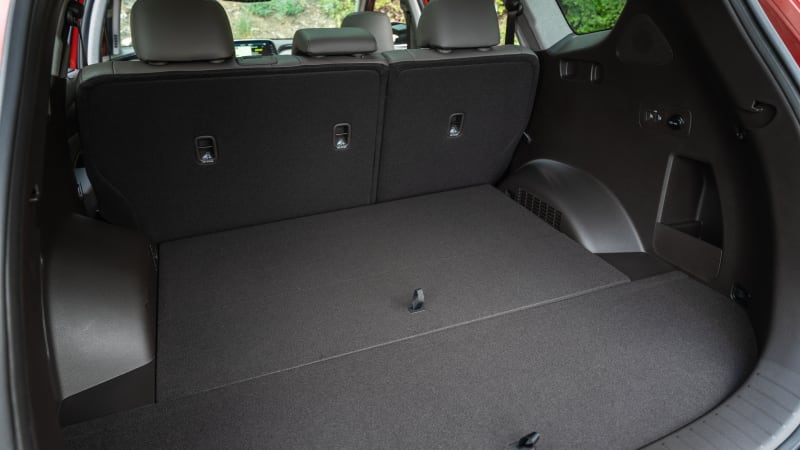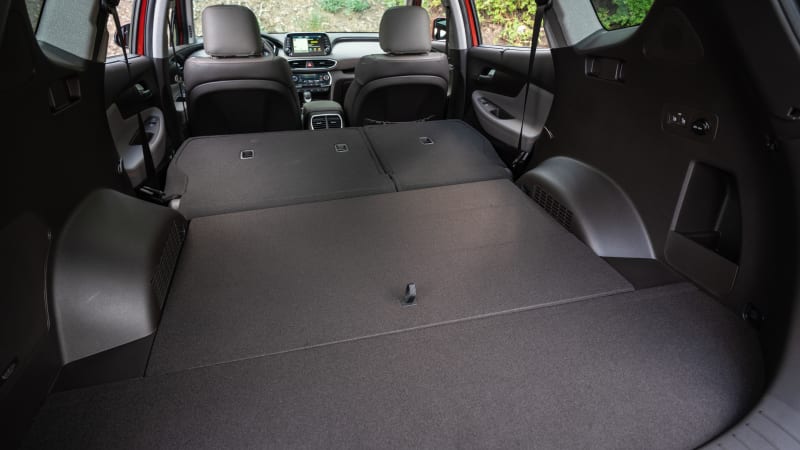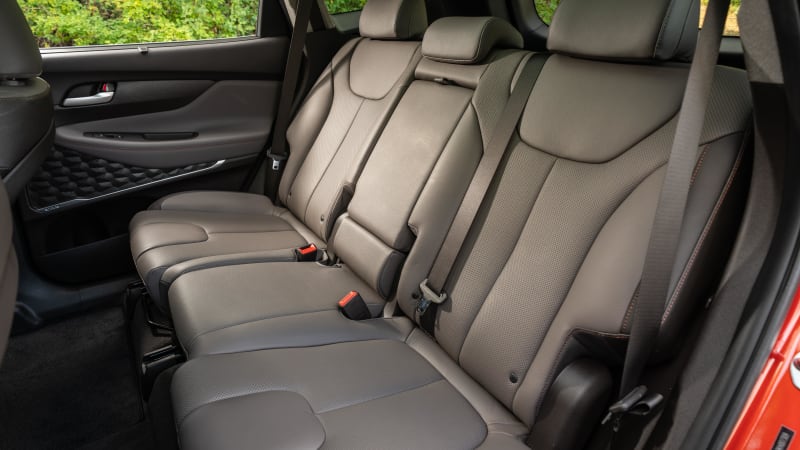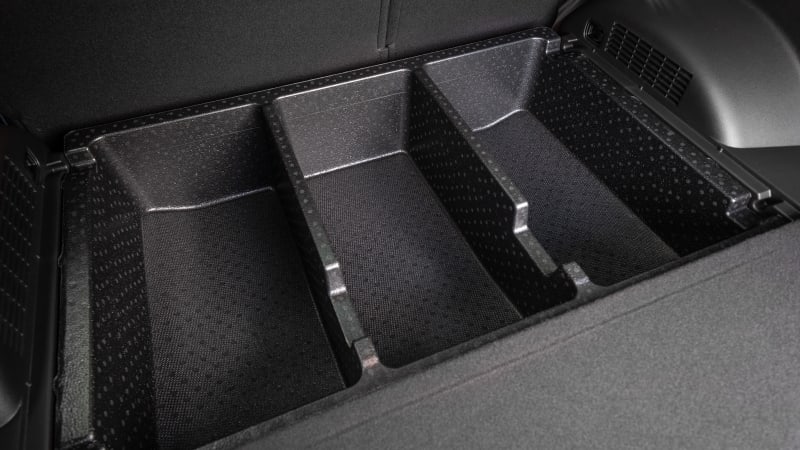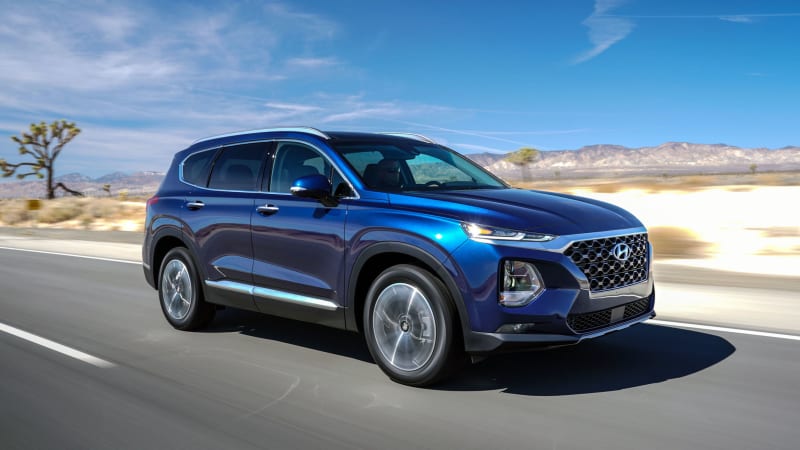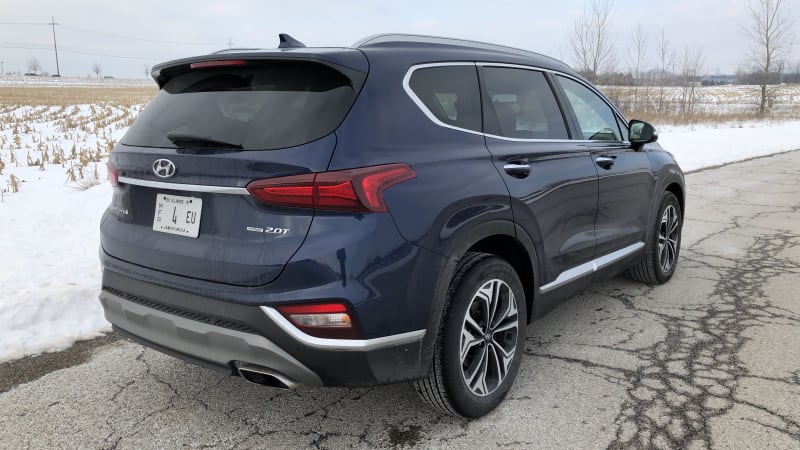2019 Hyundai Santa Fe Review and Buying Guide | Same sensibility, now more style
http://bit.ly/2FmKuK5
Driving a Santa Fe has never made much of a statement to the world beyond declaring your preference for respectable utility and excellent value. The 2019 Hyundai Santa Fe, by contrast, offers to do more thanks to a compelling redesign that includes a sleeker exterior and more visually interesting interior. Its re-engineered chassis also results in an improved driving experience, which can’t necessarily be described as fun, but is at least far more competitive than before. Basically, you’re less likely to say you chose a Santa Fe because you got a great price.
Less likely, perhaps, but that’s still a major reason to get one. You’ll get more equipment for your money than other midsize crossovers along with Hyundai’s generous warranty coverage. It’s also important to note that the 2019 Santa Fe is still a bit of a tweener crossover, falling in between the compact and midsize segments in terms of dimensions, engine choice, driving experience and price tag. This helps it stand out a bit in a crowded crossover field, and could represent a just right size for many shoppers.
Now, a word on just what vehicle we’re reviewing. The 2019 Hyundai Santa Fe, only available with five-passenger seating, replaces last year’s Santa Fe Sport. By contrast, last year’s Santa Fe, a seven-passenger model, is unchanged but renamed the Santa Fe XL for 2019 only. It’ll be replaced by the 2020 Hyundai Palisade.
What’s new with Santa Fe for 2019?
The 2019 Hyundai Santa Fe represents a complete redesign, so changes are aplenty. For starters, the crossover grew in size and added much bolder and chiseled styling. Suspension geometry was adjusted so as to improve ride and handling over the previous model, too.
Hyundai went at the interior with a heavy hand and made it look much more upscale and stylish. The new dash design is lower, and visibility is improved as a result. Then, Hyundai says it added much more sound insulation for a quieter ride. Tech plays a big role in making the new Santa Fe more appealing on the inside. There’s a new 7-inch touchscreen, a digital display in the instrument cluster and optional features like a heads-up display and a wireless charging pad. There are also additional safety and driver assistance technologies.
What’s the Santa Fe’s interior and in-car technology like?
Smooth, curving horizontal lines and surfaces grace the dashboard and doors, providing more of an organic appearance than you’ll find in competitors like the
or
. Soft-touch surfaces are plentiful, as even the dash has a soft, squishy feel to it. The switchgear isn’t exactly up to
standards, but the various buttons and knobs pleasingly move in a way that speaks to an underlying quality. Stepping up to Premium trim levels adds rich colors, leather, and fake-but-classy-looking wood trim. There are a bunch of little cubbies and storage spaces in the center console area and in the doors. The two cupholders up front aren’t huge, but will fit most regular drinks.
Technology is definitely a strong suit of the Santa Fe’s. Even the most basic SE trim has the 7-inch touchscreen with Apple CarPlay and Android Auto on board. As all of Hyundai’s infotainment systems tend to be, this one is quick and easy to use — the vehicles we drove didn’t appear to have any functionality hiccups either. The base car also comes with four USB ports, so everybody can plug in. If you opt for a more expensive Santa Fe, you’ll get premium features like a heads-up display and wireless phone charger.
How big is Santa Fe?
The 2019 Santa Fe is a bit larger than its Santa Fe Sport predecessor, and at 187.8 inches in length, its size places it in between compact SUVs like the
and midsize models like the
(although it’s ultimately closer to the midsizers). As such, it could be a “just right” size for certain SUV shoppers in terms of balancing interior space with
and how much space you want taken up in your garage.
Functionally, the Santa Fe’s back seat is bigger than most, with legroom that’s actually better than most compact and midsize SUVs. Every Santa Fe also has a 60/40-split back seat that folds and generously reclines, but starting with the SEL Plus, it also slides to increase cargo volume or bring kids a bit closer to mom and dad up front. Although common in three-row SUVs, a sliding back seat is rare in two-row models.
Beyond that back seat, the Santa Fe has about the same cargo capacity (35.9 cubic feet with seats raised, 71.2 lowered) as larger “compact” models like the
and
, and just a bit less than larger midsizers like the Honda Passport and
. Really, no matter what you compare it to, the Santa Fe ends up looking pretty good. It also benefits from a giant under-floor area that expands space further. When you’re on a big family
, finding such bonus spaces can be the difference between bringing everything along and leaving something at home or needing to affix a roof box.
What’s the Santa Fe like to drive?
The Santa Fe is a perfectly competent and pleasant crossover to drive. Its handling isn’t the sharpest, and there’s a feeling of isolation from the road, but its new suspension for 2019 results in substantially better composure than before. It no longer excessively rebounds over bumps, nor get knocked out of a whack by a mid-corner bump. Ride quality is also agreeable, as the suspension ably soaks up bumps, but the Santa Fe still doesn’t have the sort of solid, bigger-car feel of heavier midsize models like the
,
or
.
Road noise and wind noise are kept low thanks to ample sound damping, but the 2.0-liter turbo engine has a low, gravelly type of sound. This is a shame, since the upgrade engine is otherwise impressively strong, smooth and not especially turbo-like in its power delivery. The eight-speed automatic is reasonably quick to respond, and putting the car in Sport mode improves these responses further. Its grade logic, or the ability to hold the correct gear when traveling up or down hill, impressed as well. We also liked that the automatic stop/start system was difficult to detect. We have not had a chance to test a Santa Fe with the base engine.
What more can I read about the Santa Fe?
Our first driving impressions of the new Santa Fe, including more in-depth information about what’s new for 2019, along with details about its design and engineering.
Our editors test the Santa Fe Ultimate trim level with the turbocharged four-cylinder engine.
What features are available and what’s the Santa Fe’s price?
Pricing for the 2019 Hyundai Santa Fe SE starts at $26,480, including the $980 destination charge. It’ll reach as high as $38,080 for the Ultimate 2.0T trim, but you can add options after that. In general, you get far more features for your money than you do in midsize SUVs.
Hyundai includes things like 17-inch alloy wheels, LED DRLs, keyless entry, a 7-inch touchscreen with Apple CarPlay and Android Auto, four USB ports, and the driver assistance systems listed in our Safety section below. Many of those features are optional on some luxury cars, so it’s neat to see Hyundai including them. If you want all-wheel drive, it can be had on any trim for $1,700 more. Also, the 2.0-liter turbo engine is an option only on the Limited and Ultimate trims.
The base price for each trim level is listed below, but we provide a full breakdown of features, specs and local pricing
.
SEL: $28,580
SEL Plus: $30,780
Limited: $33,580
Limited 2.0T: $35,180
Ultimate: $36,430
Ultimate 2.0T: $38,080
What are Santa Fe’s safety equipment and crash ratings?
Every 2019 Santa Fe comes with a wide array of standard safety features. Equipment includes forward collision warning, automatic emergency braking, blind-spot warning, lane-keeping assist, adaptive cruise control, automated high-beam control and a driver attention warning system. A distinctive feature is Hyundai’s “Safe Exit Assist,” which is able to detect traffic coming from behind, then not allow the door to open into the traffic. We’ve found these systems to be well-executed. They aren’t prone to false alarms, nor are they intimidating or difficult to use while piloting the car. That certainly isn’t the case for every manufacturer out there.
The new Santa Fe received a five-star overall crash rating from the government, including four-star frontal and five-star side ratings. The
Insurance Institute for Highway Safety
named it a Top Safety Pick+ for its best possible crash protection and prevention ratings. Even its optional headlights received a top rating of “Good” (although the standard bulbs only received a “Moderate” rating.
Auto Blog
via Autoblog http://bit.ly/1afPJWx
June 19, 2019 at 10:24AM

